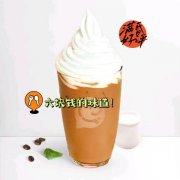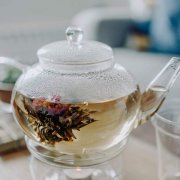The Origin and Development of the three Black Tea in China the Origin, Development and Historical Story of Black Tea
Tea is the second largest drink in the world after water.
Historically, the discovery of tea has been shrouded in myths and uncertainty. The attraction of tea today comes largely from exoticism. It is believed that the Chinese emperor Shennong (2737 BC) was the first person to discover tea. While drinking boiling water in the garden, Shennong caught a leaf of a nearby tea tree with a cup.
The legend also credits the invention of the plough to Shennong; teaches his people animal husbandry (his name translates as "sacred farmer"); writes "medical books"; and discovers the therapeutic effects of plants. As we all know, the history of tea began with a medicinal beverage with many health characteristics, so it is quite credible that Shennong is the discoverer of tea.
Some confusion about tea characters was established sometime in the Tang Dynasty (18-917 AD). Before that, this character may also refer to thistles or even ordinary grass.
The earliest reliable record of tea is in an ancient Chinese dictionary about 350 AD. The wine, described as a medicinal drink, is boiled with raw green leaves in a kettle, a process common among mountain people in southwestern China. Boiled water can kill bacteria and other impurities and help prevent disease. This version of tea is likely to be very bitter and unpleasant. During this period, it was believed that the Chinese began to plant camellia sinensis, rather than simply peeling off its leaves as usual.

Around the 5th century, another Chinese dictionary described the soaking of processed tea. It involves pressing the leaves into cakes, baking, pounding, and then breaking them into small pieces. To make the soup, the fragments are placed in a porcelain pot, poured with boiling water, and then, to "improve the taste", add ginger, onions and oranges.
By the end of the 5th century, tea had become a commodity traded by Turkish merchants near the Mongolian border. In the Tang Dynasty (AD 618-907), the method of making tea was developed, which greatly promoted the spread of tea, and finally formed its own characteristic-tea.
By 780, tea was so important that it was taxed. In the same year, Lu Yu wrote the first book devoted to the study of tea, the Book of Tea. Lu Yu integrated tea with Taoism. His works embody the spirit of the times, and at the same time give tea a ritual essence that continues to this day, making tea maintain a sense of peace, harmony and balance. The Ten parts of the Book of Tea cover all aspects of tea from growth to drinking. It sets the standard for critical evaluation and reminds readers that "whether it is good or bad is decided by the mouth." Interestingly, although Lu Yu did not approve of adding onions and ginger to his tea, he still added salt.
In the Tang Dynasty, the common way to make tea was to beat it, shape it, press it into a mold, and then heat and dry it to make tea bricks. These tea bricks are used as currency in remote areas of China. Later, in the Song Dynasty (960-1280), the Chinese preferred a delicate kind of tea, grinding the tea into powder, pouring boiling water over the powder, and then stirring the mixture into foam with a blender. Additives are eventually rejected, but flowers, such as jasmine and roses, occasionally add their fragrance and subtle flavor. China's poetic name originated in this era, and today we have teas like "Temple of Heaven" and "Dragon well", which are descended from a poetic and elegant era. Taoism even claims that tea is an important ingredient in the elixir of immortality.
Zen Buddhists drink tea in front of the Bodhidharma statue in the temple. Because many people in the lower class are Buddhists, drinking tea is far from the medical association. Many rituals and customs of the Song Dynasty are reflected in the Japanese tea ceremony. According to legend, when Bodhidharma was meditating, he cut off his eyelids because he hated falling asleep, and the tea jumped out of his eyelids. As soon as it fell to the ground, a clump of tea trees sprouted, and the leaves made people clear-headed.
The Ming Dynasty (1368-1644) seized China from the Mongols, and soon black tea, oolong tea and green tea (tea as we know it today) became popular among the Chinese people, royalty and civilians. Teapots and cups are also becoming popular. The round pot that people are familiar with, originated in this era, is modelled on cantaloupe. During this period, tea was introduced into the West in two ways, one was through Mongolia into Russia, the other was from Japan into the Netherlands by sea. Europeans first heard of this "oriental panacea" from the Arabs. Before the sea traffic between the East and the West, the Arabs controlled land traffic.
The Portuguese had a base in Macau and their missionaries were the first Europeans to taste tea. Unable to establish relations with the Chinese, the Dutch helped the Japanese expel the Portuguese from Japan. As a result of this arrangement, the first tea that Europeans drink is likely to be Japanese green tea, rather than Chinese tea as is widely believed.

Because of the Dutch influence on what is now New York, tea began to be drunk in Manhattan around 1650. A few years later, in 1657, England's first public offering was held at the Garvey Cafe in London. Coffee is several years earlier than tea, but tea and chocolate have become a very important drink in a very short time. A few years later, in 1662, Princess Catherine of Braganza of Braganca of Portugal married Charles II, and tea soon became a fashionable drink in the court.
In 1669, the British East India Company persuaded the British government to ban the Dutch import of tea, thus gaining a monopoly on imported tea. In 1706, Tom's Coffee House, founded by Thomas Twining, began to focus on tea, and unlike male-dominated cafes, these new teahouses opened their doors to both men and women. During this period, women began to use tea instead of malt wine for breakfast, which caused some scandals. In 1680, the Duchess of York introduced tea to Scotland, and the Dutch got into the habit of drinking tea from saucers.
In the early 19th century, Anna, wife of the seventh Duke of Bedford, invented "afternoon tea" (Afternoon Tea) to avoid the heavy feeling that plagued her between two meals a day (breakfast and dinner). Because the servants didn't go to work at noon, the lunch was light, so when the servants came back at 5 p.m., Anna began to order tea and cake.
In India, the British are confused about the authenticity of local tea trees, so Chinese tea trees are imported and planted in Assam, under the guidance of the East India Company. Fortunately, Assam, native to India, is a more hardy variety, and Chinese plants that have no difficulty in survival do not adapt well. Assam was initially considered second-class tea, but soon became the first choice for breakfast tea.
In the 1870s, caffeine, Ceylon's main crop, became extinct due to a blight. Among those who saw the future in the disaster was a grocer, Thomas Lipton, who started his tea plantation on destroyed coffee crops. Within 20 years, the coffee economy of single crop has become the tea economy of single crop.
At the 1904 St. Louis World Exposition, Englishman Richard Brushington (Richard blechyden) tried to introduce the new Ceylon and Indian black tea to the United States (at that time, the United States mainly drank green tea). Because of the hot weather, the idea of tasting hot tea was not accepted. In despair, Richard poured ice into a batch of tea in an attempt to attract muggy market tourists to taste his tea. Iced tea became the most popular drink to quench thirst at the fair.
Four years later, New York City tea importer Thomas Sullivan (Thomas Sullivan) cut costs when he sent his tea samples. Instead of sending expensive tin cans and more with them, he put a small part of them in a small silk purse. Impressed by the neat, measured and self-tightening bag, the merchants thought he wanted them to soak the tea directly in the bag, so they began to order bags from Sullivan.
Important Notice :
前街咖啡 FrontStreet Coffee has moved to new addredd:
FrontStreet Coffee Address: 315,Donghua East Road,GuangZhou
Tel:020 38364473
- Prev

Honey snow ice city Nai Xue Xi tea is selling coffee and tea to keep an eye on the coffee market? Do you choose milk tea or coffee?
Have you ever had coffee from Snow Ice City? The kind that costs six yuan a cup! As I used to be a poor college student, my favorite daily tea brand should be Honey Snow Ice City. When browsing Weibo yesterday, I was surprised to find that the Snow King Xueding Coffee that was removed from the shelves in May has returned to the classic! The new and upgraded coffee series began in mid-June 2021.
- Next

Basic knowledge of six tea types and correct brewing methods what are the basic characteristics of tea?
All teas come from the same plant Camellia, however, there are many different varieties and varieties of plants. All the tea has withered. Wilting is the evaporation of water from leaves. Here is a simple explanation of production. White tea is picked, withered and baked. Green tea is picked and then steamed or fried to stop the process of oxidation and fermentation to neutralize active enzymes. The leaves withered after cooking
Related
- Beginners will see the "Coffee pull flower" guide!
- What is the difference between ice blog purified milk and ordinary milk coffee?
- Why is the Philippines the largest producer of crops in Liberia?
- For coffee extraction, should the fine powder be retained?
- How does extracted espresso fill pressed powder? How much strength does it take to press the powder?
- How to make jasmine cold extract coffee? Is the jasmine + latte good?
- Will this little toy really make the coffee taste better? How does Lily Drip affect coffee extraction?
- Will the action of slapping the filter cup also affect coffee extraction?
- What's the difference between powder-to-water ratio and powder-to-liquid ratio?
- What is the Ethiopian local species? What does it have to do with Heirloom native species?

